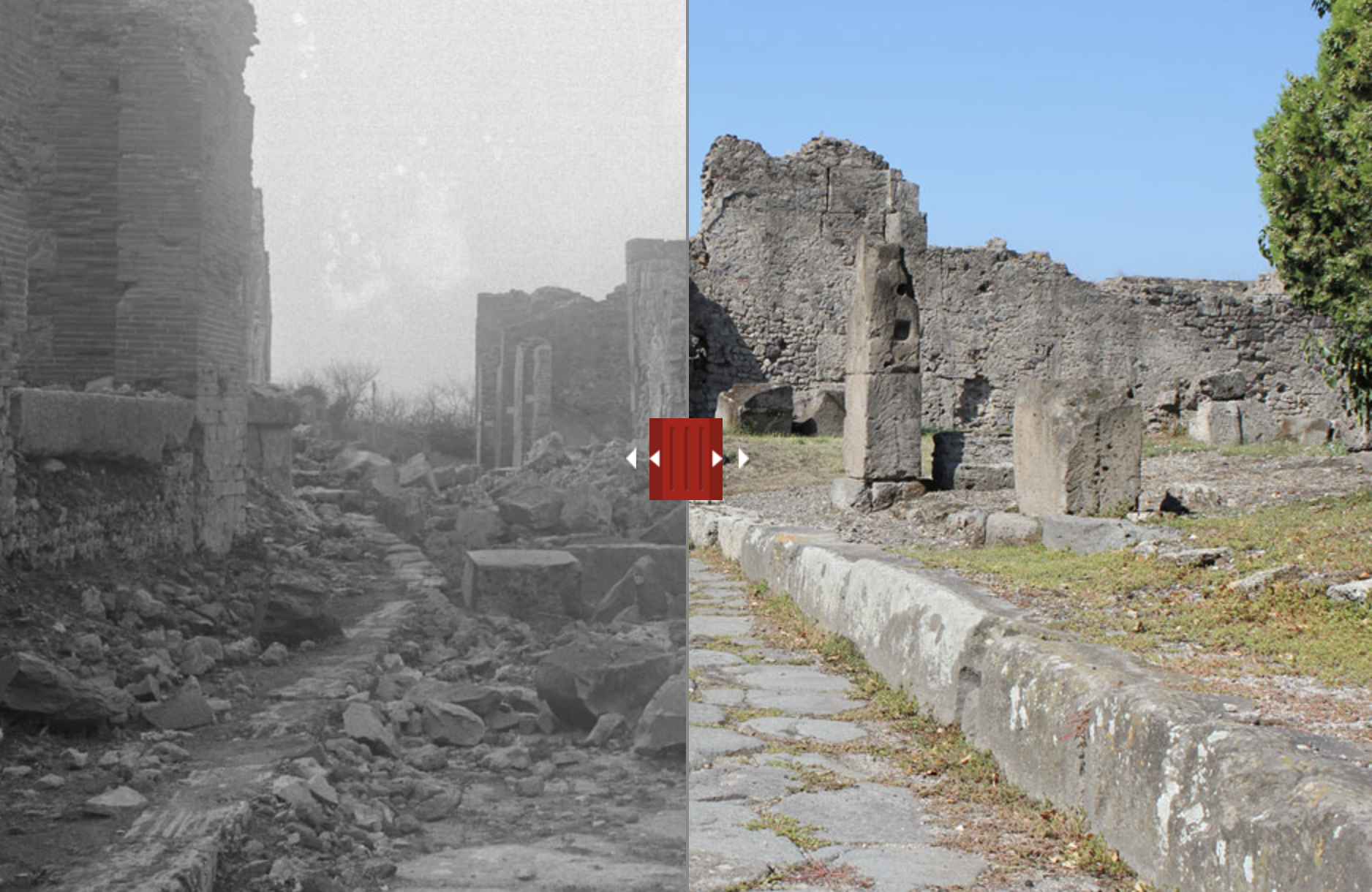[Most Recent Entries] [Calendar View]
Friday, October 15th, 2021
| Time | Event |
| 2:08a | William Shatner in Tears After Becoming the Oldest Person in Space: ‘I’m So Filled with Emotion … I Hope I Never Recover from This” Yesterday Star Trek‘s William Shatner, now 90 years old, finally became a Rocket Man, taking a trip to space. And upon his return he said: “I hope I never recover from this.” “I’m so filled with emotion about what just happened. It’s extraordinary, extraordinary. It’s so much larger than me and life. It hasn’t got anything to do with the little green men and the blue orb. It has to do with the enormity and the quickness and the suddenness of life and death.” “To see the blue color whip by you, and now you’re staring into blackness … everybody in the world needs to do this. Everybody in the world needs to see this.” What. A. Trip. Would you like to support the mission of Open Culture? Please consider making a donation to our site. It’s hard to rely 100% on ads, and your contributions will help us continue providing the best free cultural and educational materials to learners everywhere. Also consider following Open Culture on Facebook and Twitter and sharing intelligent media with your friends. Or sign up for our daily email and get a daily dose of Open Culture in your inbox. Related Content A Cult Classic: William Shatner Sings Elton John’s “Rocket Man” at 1978 SciFi Awards Show Watch City Out of Time, A Short Tribute to Venice, Narrated by William Shatner in 1959 William Shatner Narrates Space Shuttle Documentary William Shatner in Tears After Becoming the Oldest Person in Space: ‘I’m So Filled with Emotion … I Hope I Never Recover from This” is a post from: Open Culture. Follow us on Facebook and Twitter, or get our Daily Email. And don't miss our big collections of Free Online Courses, Free Online Movies, Free eBooks, Free Audio Books, Free Foreign Language Lessons, and MOOCs. |
| 8:00a | The Bombing of Pompeii During World War II In 79 AD, 17-year-old Gaius Plinius Caecilius Secundus, known as Pliny the Younger, gazed across the Bay of Naples from his vacation home in Misenum and watched Mount Vesuvius erupt. “Darkness fell, not the dark of a moonless or cloudy night,” Pliny wrote in his eyewitness account — the only surviving such document — “but as if the lamp had been put out in a dark room.” Unbeknownst to Pliny and his famous uncle, Pliny the Elder, admiral of the Roman navy and revered naturalist, hundreds of lives were also snuffed out by lava, clouds of smoke and ash, and temperatures in the hundreds of degrees Fahrenheit. The Elder Pliny launched ships to attempt an evacuation. In the morning, he was found dead, likely from asphyxiation, along with over two thousand residents of Pompeii and Herculaneum. When the buried town was first unearthed, a new cycle of witness, death, and resurrection began. “Since its rediscovery in the mid-18th century,” writes National Geographic, “the site has hosted a tireless succession of treasure hunters and archeologists,” not to mention tourists — starting with aristocratic gentlemen on their Grand Tour of Europe. In 1787, Goethe climbed Vesuvius and gazed into its crater. “He recorded with disappointment that the freshest lava was already five days old, and that the volcano neither belched flame nor pelted him with stones,” writes Amelia Soth in an article about “Pompeii Mania” among the Romantics, a passion that culminated in Edward Bulwer-Lytton’s 1834 potboiler, The Last Days of Pompeii, “hands-down the most popular novel of the age.” Bulwer-Lytton’s book “had such a dramatic impact on how we think about Pompeii,” the Getty writes, that the museum named an exhibition after it that features — unlike so many other histories — Pompeii’s 20th century “apocalypse”: an Allied bombing raid in the autumn of 1943 that damaged nearly every part of the site, including “some of Pompeii’s most famous monuments, as well as its museum.” As Nigel Pollard shows in his book Bombing Pompeii, over 160 Allied bombs hit Pompeii in August and September. Few tourists who now flock to the site know how much of the ruins have been rebuilt since then. “Only recently have the literature and the scientific community paid due attention to these dramatic events, which constitute a fundamental watershed in the modern history of the site,” writes archeologist Silvia Bertesago.
A Pliny of his time (an Elder, given his decades of scientific accomplishment), Pompeii’s superintendent, archeologist Amedeo Maiuri, “accelerated the protection of buildings and moveable items” in advance of the bombing raids. But “who will save monuments, houses and paintings from the fury of the bombardments?” he wrote. Maiuri had warned of the coming destruction, and when false information identified the slopes of Vesuvius as a German hideout, the longest-running archeological excavation in the world became “a real target of war…. The first bombing of Pompeii took place on the night of August 24 1943…. Between August 30 and the end of September, several other raids followed by both day and night…. No part of the excavations was completely spared.” Maiuri chronicled the destruction, writing:
Himself wounded in his left foot by a bomb, Maiuri helped draw up a list of 1378 destroyed items and over 100 damaged buildings. Hasty, emergency rebuilding in the years to follow would lead to the use of “experimental materials” like reinforced concrete, which “would later prove incompatible with the original materials” and itself require restoration and repair. The ruins of Pompeii were rebuilt and resurrected after they were nearly destroyed a second time by fire from the sky — this time entirely an act of humankind. But the necropolis would have its revenge. The following year, Vesuvius erupted, destroying nearly all of the 80 B-25 bombers and the Allied airfield at the foot of the mountain.
In the video above, you can learn more about the bombing of Pompeii. See photographs of the destruction at Pompeii Commitment and at the Getty Museum, which features photos of Pompeiian sites destroyed by bombing side-by-side with color images of the rebuilt sites today. These images are dramatic, enough to make us pay attention to the seams and joints if we have the chance to visit, or revisit, the famous archeological site in the future. And we might want to ask our guide if we can see not only the ruins of the natural disaster, but also the multiple undetonated bombs from the “apocalypse” of World War II. Related Content Watch the Destruction of Pompeii by Mount Vesuvius, Re-Created with Computer Animation (79 AD) Pompeii Rebuilt: A Tour of the Ancient City Before It Was Entombed by Mount Vesuvius A Drone’s Eye View of the Ruins of Pompeii Josh Jones is a writer and musician based in Durham, NC. Follow him at @jdmagness The Bombing of Pompeii During World War II is a post from: Open Culture. Follow us on Facebook and Twitter, or get our Daily Email. And don't miss our big collections of Free Online Courses, Free Online Movies, Free eBooks, Free Audio Books, Free Foreign Language Lessons, and MOOCs. |
| 11:00a | A Sneak Peek of Peter Jackson’s New Beatles Documentary Get Back: Watch the New Trailer In much the same way David Lynch gave us way more Twin Peaks than we’d ever hoped for in 2017, Peter Jackson and the Beatles are giving us nothing like the little seen and quickly shelved Let It Be documentary from 1970, but a full six hours of the final musical works of the Beatles. Premiering on Disney Plus (yes, I know, you gotta pay money to the Mouse) over three days after Thanksgiving, this six-hour series is the big one fans of the various remasters, repackages, and remixes have been waiting for. The Get Back sessions have long been a sour note in a career that was mostly joyous. Appearing over and over again in bootleg form, the various jam sessions, cover versions, and rehearsals through the songs that would turn up on Abbey Road and Let It Be can be grim listening. (I know, I’ve listened to a lot of it. The Beatles practicing is just as tedious as any other band working through songs.) The general narrative is that the acrimony among the band members, the wraith-like presence of Yoko Ono, and Paul’s relentlessly upbeat badgering of everybody else caused the world’s most famous band to break up. Abandoning the project, they performed some of the songs on a Saville Row rooftop, and the rest was left up to the lawyers (and Phil Spector) to sort out. Jackson’s Get Back, made with the blessings of the surviving Beatles, intends to upend that narrative. “The thing is, when the film was released, The Beatles were breaking up, but they weren’t breaking up when they were making Let It Be, which was recorded a year earlier,” Jackson told GQ Magazine. “So I suppose it would have been odd to release a film where they are all enjoying each other’s company.” The acrimony only set in later, when Allen Klein became their manager, he added. This is Beatles as a family, and families argue, joke about, and get down to family business. Honing the techniques Jackson used to bring to life old World War I footage in They Shall Not Grow Old, the film takes the 57 hours of footage shot by Michael Lindsay-Hogg and makes it look like it was shot yesterday. The colors you see in the trailer, however, have not been altered. “I mean, it does make you jealous of the 1960s, because the clothing is so fantastic,” Jackson said. The album Let It Be always had the shadow of a bad breakup over it, but for newer generations, that may no longer be the case after this documentary drops next month. Related Content: The Beatles’ 8 Pioneering Innovations: A Video Essay Exploring How the Fab Four Changed Pop Music Ted Mills is a freelance writer on the arts who currently hosts the Notes from the Shed podcast and is the producer of KCRW’s Curious Coast. You can also follow him on Twitter at @tedmills, and/or watch his films here. A Sneak Peek of Peter Jackson’s New Beatles Documentary Get Back: Watch the New Trailer is a post from: Open Culture. Follow us on Facebook and Twitter, or get our Daily Email. And don't miss our big collections of Free Online Courses, Free Online Movies, Free eBooks, Free Audio Books, Free Foreign Language Lessons, and MOOCs. |
| << Previous Day |
2021/10/15 [Calendar] |
Next Day >> |




